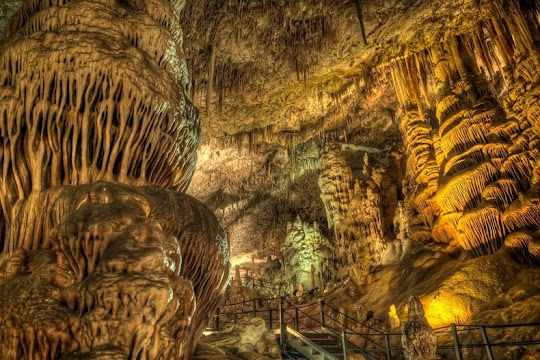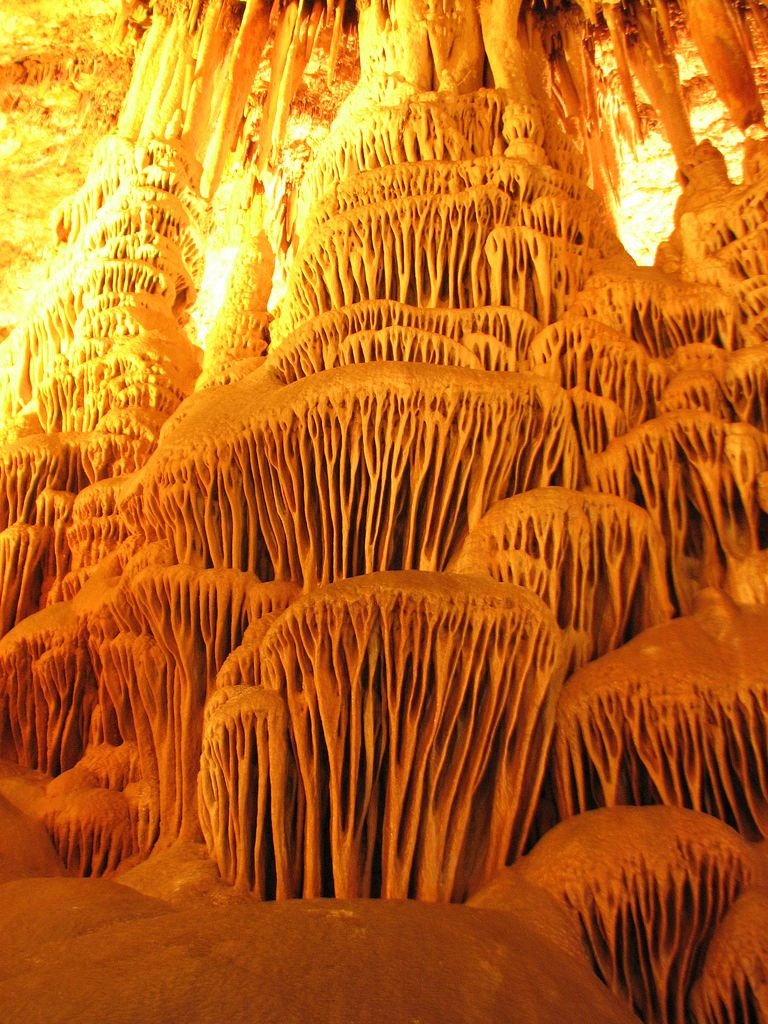Stalactites and stalagmites are formed by water flowing from the ceiling to the floor of the cave, melting limestone on the way. Over hundreds of thousands of years, each drop of mineral-laden water deposited a thin layer of calcite on the ceiling and on the ground. Given enough time these tiny layers add up to form columns of calcium carbonate called stalactites and stalagmites.

The Avshalom Cave was discovered by accident in May 1968 when an explosion opened a crack to reveal the magical and fantastic cave hidden beneath. According to geologists, the Soreq cave was formed around 25 million-years ago, when the mountainous range of the Judean Hills rose up above the surface of the water. The layers of limestone and dolomite rock were displaced and folded with time, forming cracks which allowed water to enter and dissolve some of the rock. While seeping through the cracks and flowing through the soil this water absorbed increasing amounts of carbon dioxide from the roots of the plants and the surrounding decay. This process that turns the water acidic is called “Karst” and helped with the cave expansion process.
Years later, when the sea retreated and lowered the ground water level, the dissolution of rock stopped and the process was reversed. Drops of water saturated with limestone solution reached the ceiling of the cave the carbon dioxide escaped and the remaining limestone crystallized, creating the huge diversity of stalactites we see today. In several still-active areas of the cave, which maintains constant heat and humidity year-round, the stalactites and stalagmites continue to grow.
The cave is named after Avshalom Shoham, an Israeli soldier killed in the War of Attrition. After its discovery, the location of the cave was kept a secret for several years for fear of damage to its natural treasures. The cave which is in the heart of the 67-dunam Avshalom Nature Reserve, declared in 1975, is today open year round to visitors.








Source
